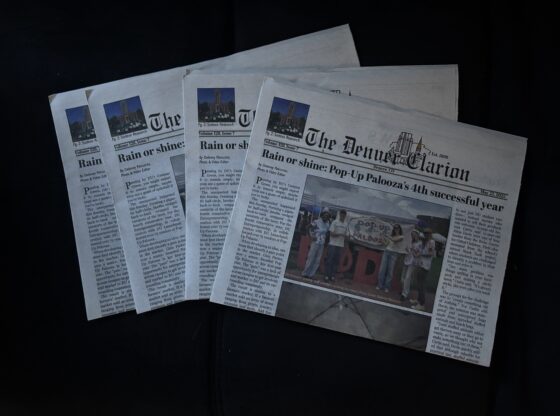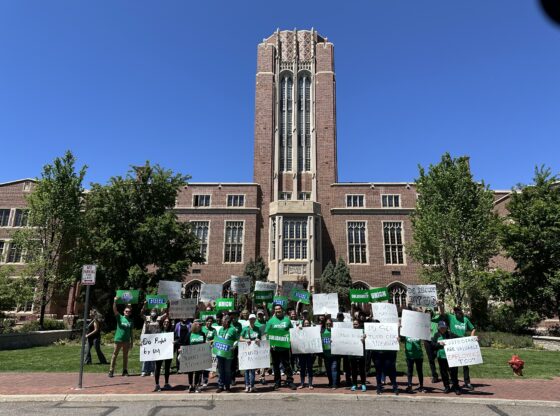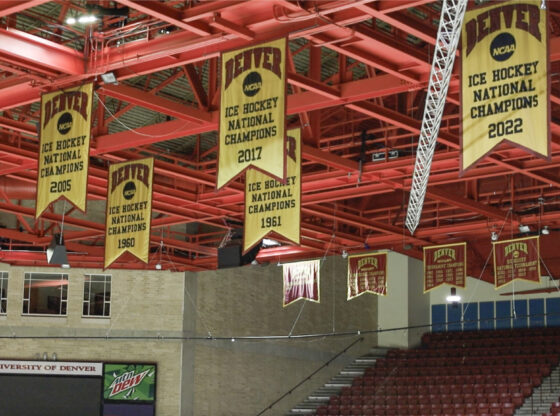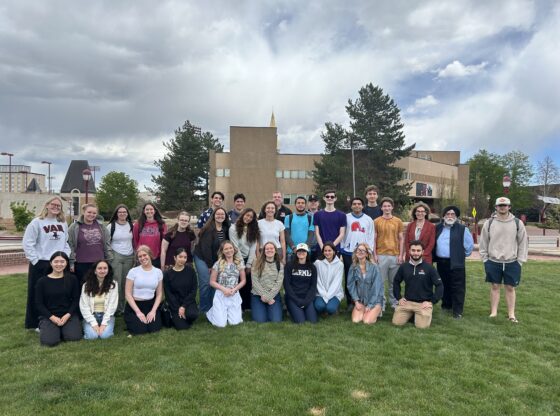Images faded in and out of clarity on the projector screen as Jim Amoss, editor of the New Orleans Times-Picayune, reflected on the chaos, devastation and destruction of Hurricane Katrina. Each slide displayed a raw image of the storm’s aftermath like an open wound and also gave each slide a title.
Amoss spoke to a journalism class last Tuesday. That evening he received the Anvil of Freedom Award from the Estlow International Center for Journalism and News Media.
Escape. Five small children sit afloat in a red plastic basin as they drift through the flood, guided by the hands of older teenage boys.
The staff of the Times-Picayune waited in their office until the last possible moment, to document Hurricane Katrina’s devastation of New Orleans.
“Twenty-four hours after the storm, we watched out the windows of our office building as the water kept rising at a rate of about 10-inches per hour,” said Amoss.
“We needed to make a plan to keep functioning,” said Amoss. The staff of the Times-Picayune drove out of the wreckage of the storm and into Batton Rouge where they were able to print a paper.
Surrender. Tears roll down the face of a young woman as she lifts herself out of a freshly cut hole in the roof of her house.
Despite the disorder, confusion and destruction that the staff of the Times-Picayune was able to document, the passion of these individuals and to communicate with the city’s residents. The news paper offered a gateway into discovering what was taking place during those difficult weeks, as this newspaper was one of the only ways of receiving any information, Amoss said.
“We distributed the paper, 50,000 of them, after the storm in shelters for free and swarms of people were grabbing at it like it was food,” said Amoss.
Survive. A man holds his medicine in a plastic bag above his head as he floats out of the front door of his house.
After escaping the flooding of their office in New Orleans and recognizing the value of news to the people of their city, 16 Times-Picayune journalists decided that, “in order to capture the real news, they had to go back into the city,” said Amoss.
“They stumbled into a huge looting scene, where even the police were participating. I’m not talking only food, I mean, people were coming out of Wal-Mart with plasma televisions,” said Amoss, “It actually started a sort of ethical debate with our staff… they decided that it was okay to take some goods as long as they wrote about it in their stories.”
Cope. A woman sits cross-legged on a twin-sized bed, in a cement-walled room, staring at a 12-inch television across the room on the floor in the corner.
“Our journalists are living what they’re writing about,” said Amoss, “We spend every day covering the storm, and then go home to fix our houses and call contractors.”
In 2006, the Times-Picayune won two Pulitzer Prizes for reporting on Hurricane Katrina.
Revive. An aerieal angle of New Orleans displays an image of cleared lots and houses under construction.











